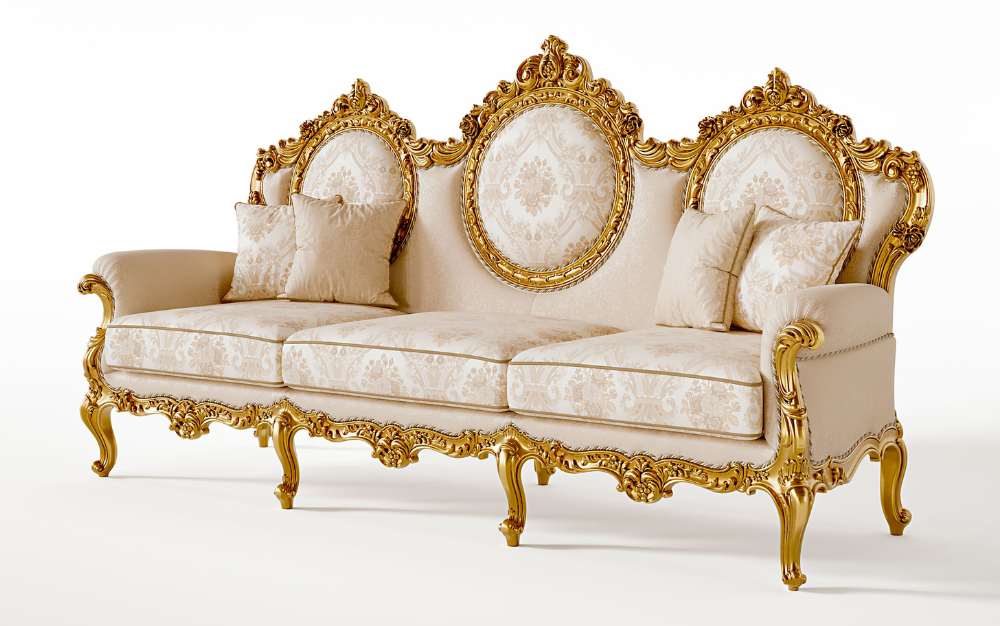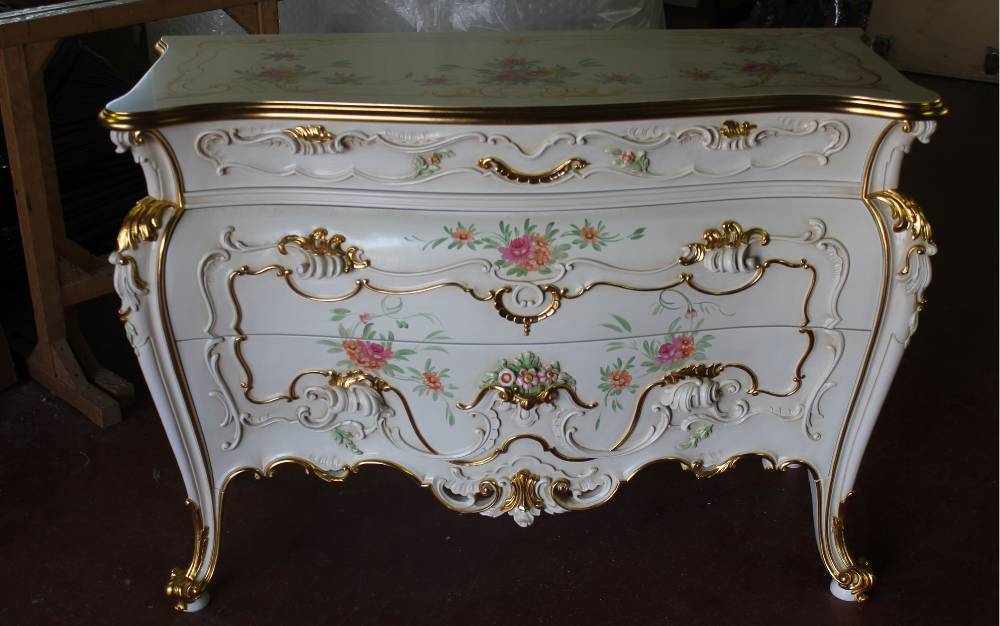
In this article, we will discuss:
- What the expression “classic style” means,
- A mini guide to classic styles:
Louis XIV Style,
Louis XV Style,
Rococo, - Conclusions
What the Expression “Classic Style” Means
Often, we hear about classic furniture, art décor, and baroque furniture. We hear about art, modernism, interior design styles, and history. And perhaps, in trying to define classic furniture correctly, we mix up some information without really knowing the answers to “What characteristics define classic furniture?” and “How can we recognize the various styles grouped under the term ‘classic’?”
Some people might think history is not that important, and others might believe that art is created with anarchy. But that’s not quite true.
As Balzac taught us, the milieu, meaning the historical, social, and environmental context, influences everyone. We can add that it also determines the birth, consolidation, or disappearance of expressive choices applied not only to painting, sculpture, and music but also to furniture styles. The world of furniture, like the world of art, is always composed of people who, in any case, relate to the home, political, and public styles of their time.
To better understand what a style is, let’s start with the most generic definition we find on Google:
“The complex of expressive choices and means that constitute the peculiar imprint of a school, literary, musical, or artistic tradition, and especially the personality of the author (in archaic usage also the form style): style ornaments; master of style; madonna in the Giottesque style; Byzantine, Romanesque, Gothic style; Tacitus’ style; Wagner’s style.”
Now, let’s shift our attention to the generic definition of the adjective “classic,” often used improperly:
“Of spiritual and cultural realization worthy of study and elevated to a model; exemplary, fundamental: a now classic work; by antonomasia, the documents and the world itself of the ancient Greeks and Romans.”
From this, we can deduce that the expression “classic style” refers to the complex of choices and expressive means that recall the decorations and aesthetic criteria of Greek-Roman origin to create well-recognizable artistic models.
Considering the complexity of classifying classic-style furniture, we provide a quick guide below to recognize the main styles in less than three minutes, whether it’s classic furniture for living rooms, dining rooms, entrances, studies, bedrooms, kitchens, or even classic-style bathrooms!
MINI GUIDE TO CLASSIC STYLES
Chapter 1 – Louis XIV Style (1643-1715), The Sun King’s Style
The Louis XIV style became one of the models of furniture and art imposed by the Sun King in France, influencing much of the furniture styles across Europe, including Italy. The Sun King sought to express magnificence, control, and originality through furniture.
Distinctive Features:
- X-shaped stretcher near the ends of legs and feet,
- Curved legs and rectangular structures (for dressers, desks, etc.),
- Marble or alabaster tops for gloriously proportioned consoles,
- Gilding as the primary wood finish,
- Symmetrical inlays and carvings,
- Polychrome floral decorations, ribbons, and sun rays,
- Application of tortoiseshell details,
- Imposing living rooms with high backs.
Bazzi Interiors Distinctive Features:
Our Louis XIV-style bifacial console, art. F770, features symmetrical floral carvings, an X-shaped stretcher at the feet, a gilded finish, a coat of arms representing the noble family of the purchaser, and a top inlaid by hand with neutral and colored mother-of-pearl. Everything is strictly symmetrical.
Chapter 2 – Louis XV Style (1723-1774)
The Louis XV style revolutionized the rigidity of previous styles, introducing softer forms more focused on nature, without forgetting the importance of gold. To achieve this “freedom of forms,” the most illustrious cabinetmakers designed significant yet lightweight wooden furniture in the classic style.
Distinctive Features:
- Lightened carcasses,
- Curved legs,
- Naturalistic decorations,
- Asymmetrical decorative motifs.
Bazzi Interiors Distinctive Features:
Our Louis XV-style sofa, mod. Blanche S09, measuring 271x89x145h cm, features a soft structure, floral motif carvings, thin curved legs finely carved by hand. The finish, currently in gold, can be customized according to the customer’s taste.

Chapter 3 – Rococo Style (1750 – 1870)
The Rococo Style briefly overlapped with the Louis XV style. It sought to counter the Baroque style with its graceful and undulating forms. Specifically, Rococo aimed to lighten society’s heavy concerns from the past, reflecting the contemporary way of life in its furniture design.
Distinctive Features:
- Undulating shapes and structures,
- Carved scrolls,
- Floral arabesques,
- Delicate and joyful decorations in pastel colors,
- Oriental themes and/or motifs such as shells, dragons, reeds, palms, and plants,
- Asymmetrical compositions,
- Inlays of bronze, precious woods, tortoiseshell, marble, ivory, mother-of-pearl, and silver.
Bazzi Interiors Distinctive Features: Our Rococo-style dresser, model Nuvola 300, is a handcrafted piece where curves, waves, and sinuosity define the structure. Polychrome floral decorations in pastel colors, alternated with details finished in gold leaf, bring joy and lightness to the entire piece.

CONCLUSIONS
As you can see, each furniture style has its historical context, and every historical context has its distinct furniture style, which can either reinforce or nullify previous stylistic canons while retaining timeless classic characteristics.
For more information, contact us via WhatsApp at +39 334 8166760, or follow our blog. You can also email us at bazzi@bazziinteriors.com, even just for advice on how to furnish your classic living room.

